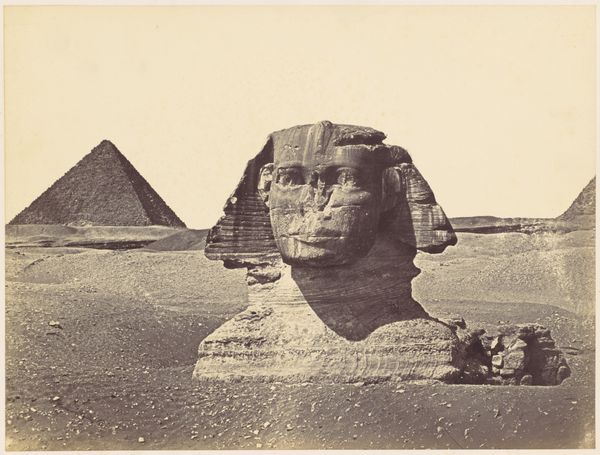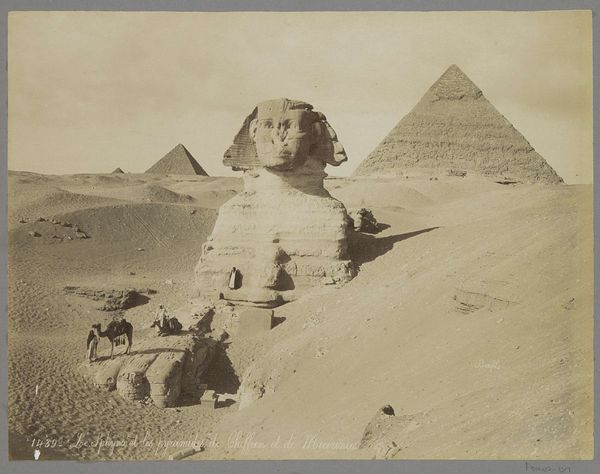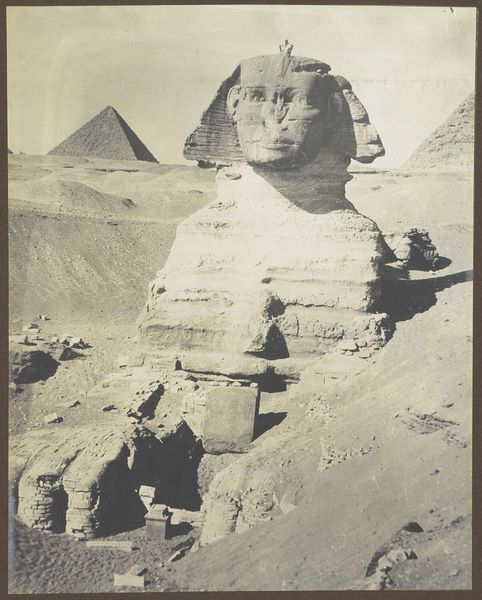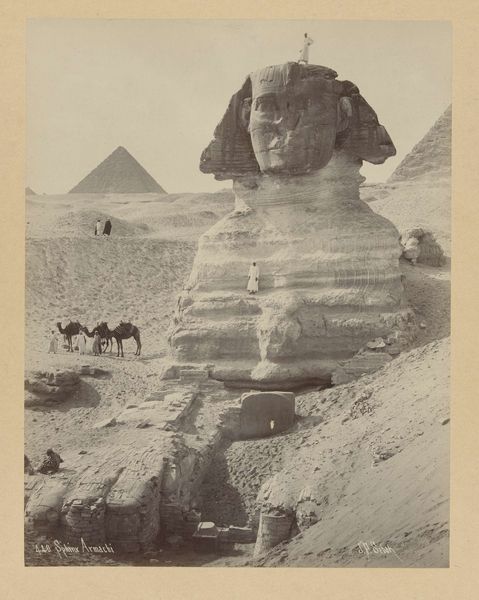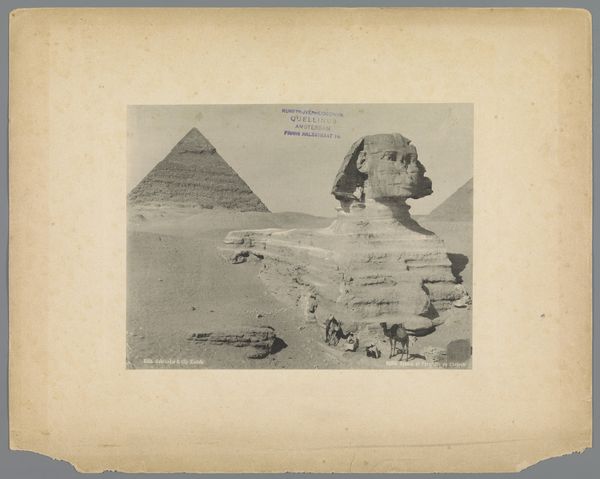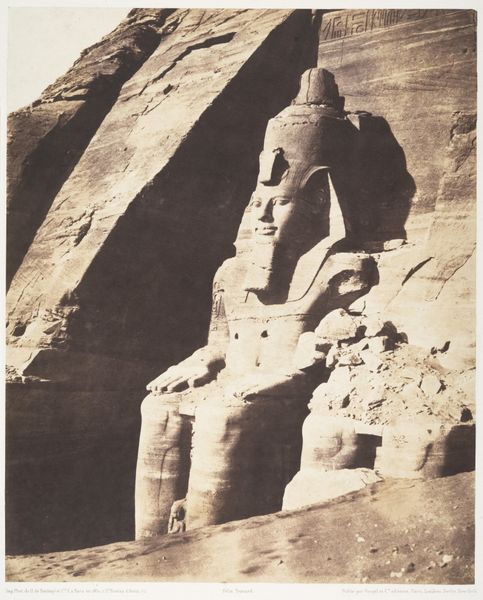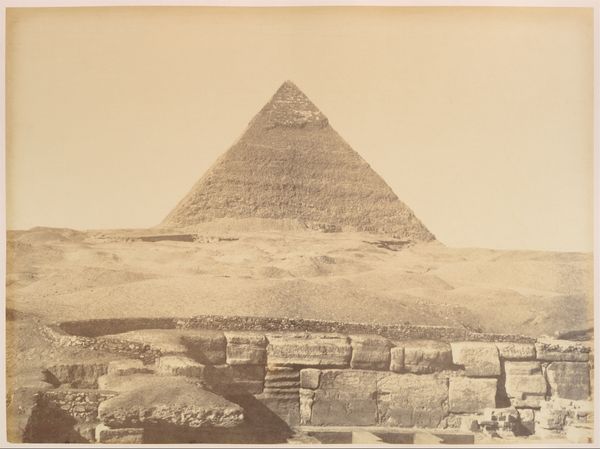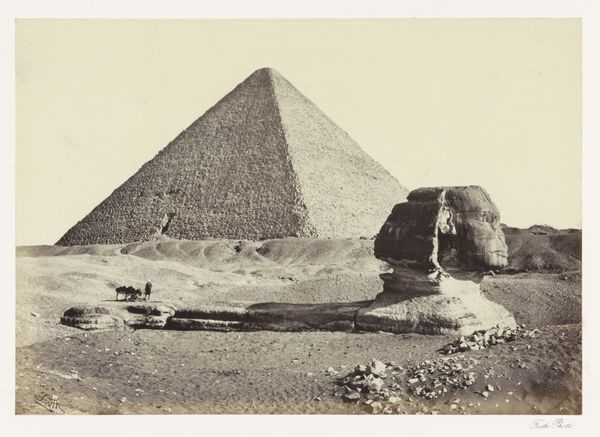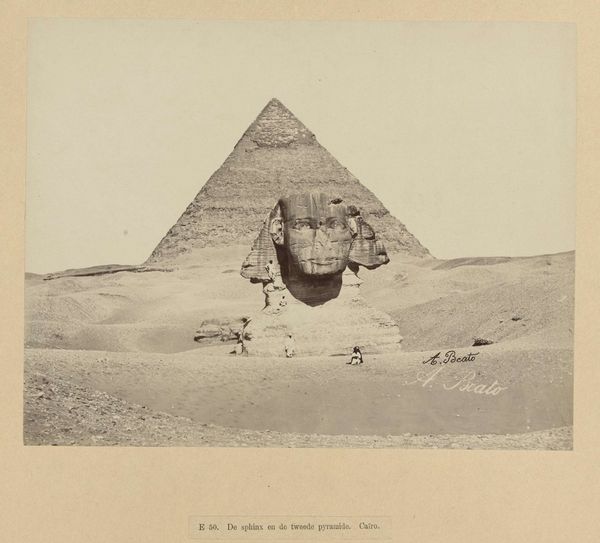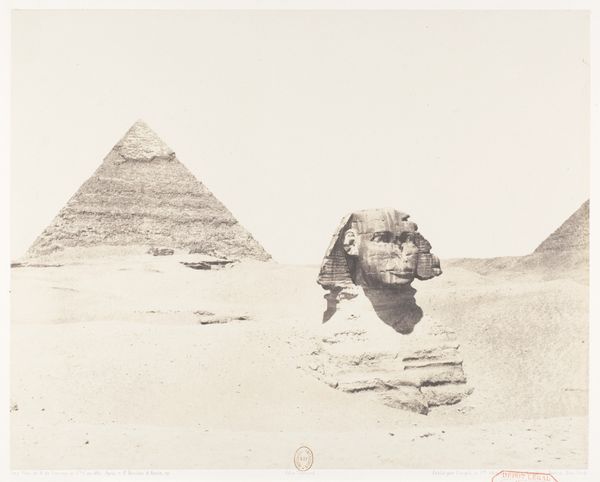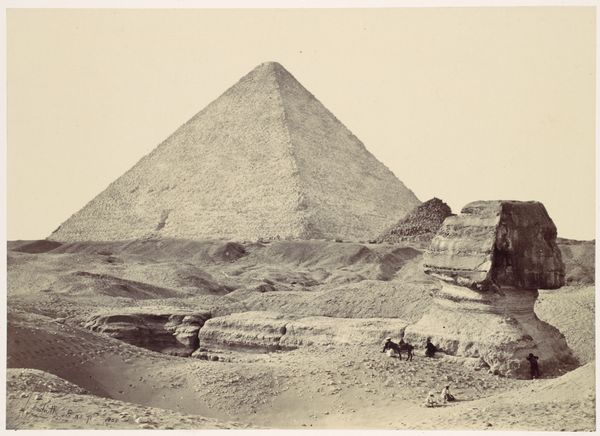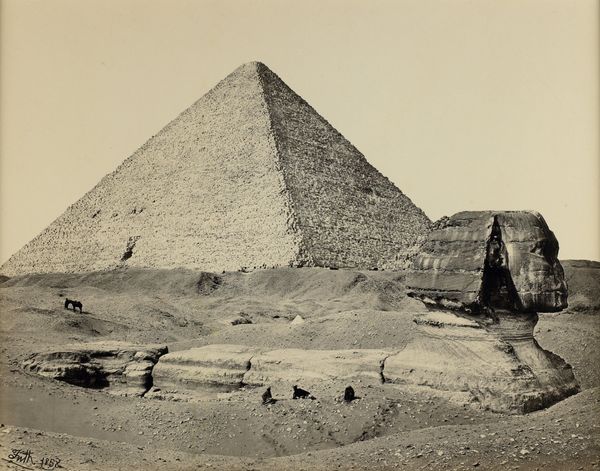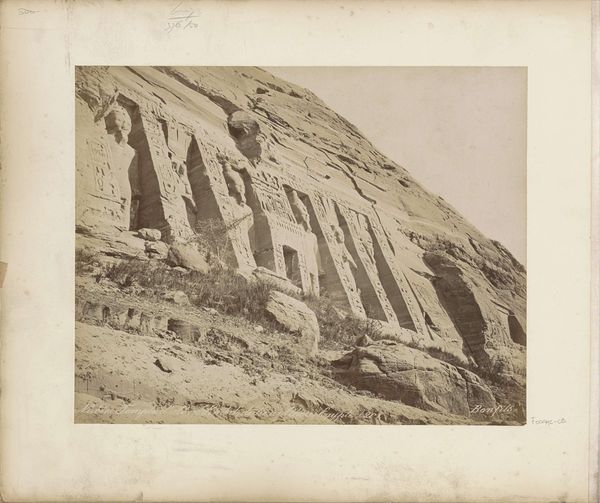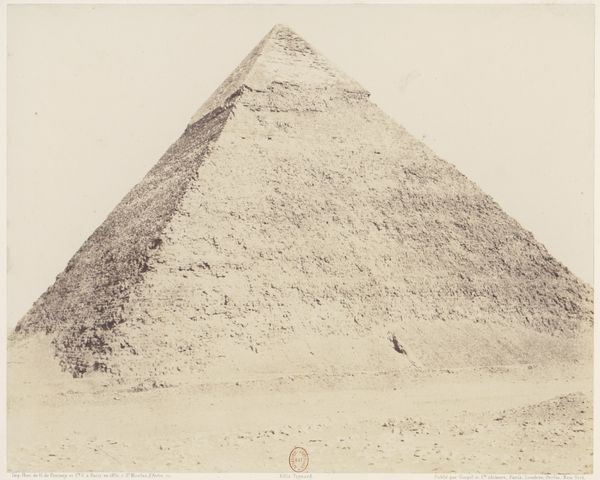
photography, gelatin-silver-print, albumen-print
#
landscape
#
ancient-egyptian-art
#
photography
#
orientalism
#
gelatin-silver-print
#
cityscape
#
albumen-print
#
realism
Dimensions: height 220 mm, width 282 mm
Copyright: Rijks Museum: Open Domain
Editor: So, this photograph, "Sfinx en piramides van Gizeh" by Maison Bonfils, taken sometime between 1870 and 1898, is incredibly striking. The way the vastness of the landscape is captured is captivating. What do you see in this piece? Curator: Beyond its aesthetic appeal, this photograph operates as a potent symbol of Orientalism and colonial power dynamics. The composition, with the Sphinx as a central figure, invites us to consider how the West constructed its image of the "Orient". The presence of people in traditional attire and camels is a powerful one. Editor: That's fascinating. How does that relate to, say, contemporary understandings? Curator: Think about who is taking the picture. The photographer, Maison Bonfils, a European studio, is capturing this landscape for a Western audience, shaping their perceptions. The inclusion of people in this environment emphasizes their “otherness”, reinforcing stereotypes. How might this photograph play into the existing narratives? Editor: I see what you mean. It's not just a landscape, but a carefully constructed narrative. The pyramid is so iconic, but you've helped me see that it plays into cultural and historical power structures. Curator: Precisely. Consider the very act of photographing a culture that is not your own, especially through the lens of that time. It raises crucial questions about representation, authority, and the gaze. Understanding these intersections helps decolonize our way of interpreting art. Editor: This reframes everything for me! Now I am more sensitive to these social and political factors and less to any "inherent" aesthetics of form. Thank you for sharing this perspective! Curator: Of course. Approaching historical works through a critical lens lets us reframe how we see ourselves as participants.
Comments
No comments
Be the first to comment and join the conversation on the ultimate creative platform.
